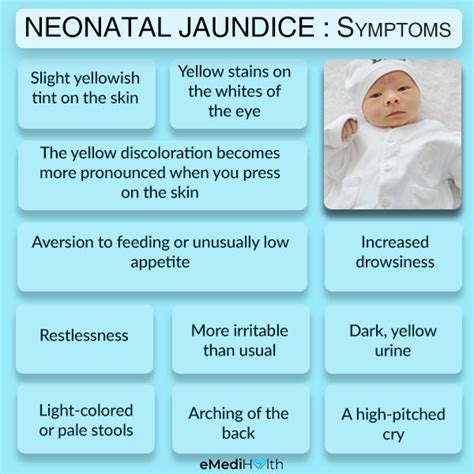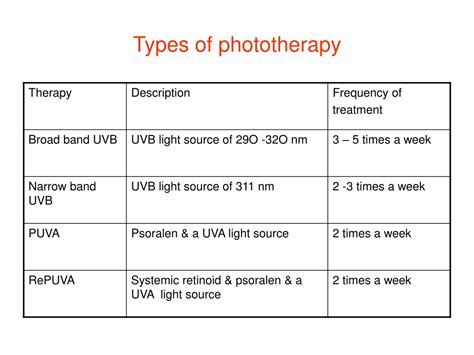Intro
Discover effective newborn jaundice treatment options, including phototherapy, bilirubin tests, and liver support, to manage infant jaundice symptoms and prevent complications like kernicterus.
Newborn jaundice is a common condition that affects many infants in the first few days or weeks of life. It is characterized by a yellowish discoloration of the skin and eyes, which can be alarming for new parents. However, with proper treatment, most babies with newborn jaundice can recover fully and lead healthy lives. In this article, we will delve into the world of newborn jaundice treatment options, exploring the various methods and approaches that healthcare professionals use to manage this condition.
Newborn jaundice is a significant concern for parents, as it can lead to serious complications if left untreated. The condition occurs when the baby's liver is not mature enough to process bilirubin, a yellow pigment that is produced during the breakdown of red blood cells. As a result, bilirubin builds up in the blood, causing the characteristic yellowish discoloration of the skin and eyes. In severe cases, newborn jaundice can lead to kernicterus, a condition that can cause brain damage, hearing loss, and other developmental problems.
The importance of treating newborn jaundice cannot be overstated. Early intervention is crucial to prevent long-term damage and ensure the best possible outcomes for the baby. Fortunately, there are several effective treatment options available, ranging from simple phototherapy to more complex medical interventions. In the following sections, we will explore these treatment options in detail, discussing their benefits, risks, and limitations.
Newborn Jaundice Treatment Overview

Newborn jaundice treatment typically involves a combination of supportive care, phototherapy, and, in severe cases, medical interventions. The goal of treatment is to reduce bilirubin levels, prevent brain damage, and promote the overall health and well-being of the baby. Supportive care includes measures such as hydration, nutrition, and monitoring of the baby's condition. Phototherapy, which involves exposure to special lights, is often used to help the baby's body eliminate bilirubin.
Phototherapy for Newborn Jaundice
Phototherapy is a non-invasive and highly effective treatment for newborn jaundice. It involves placing the baby under special lights that emit a specific wavelength of light, which helps to break down bilirubin in the skin. The light is absorbed by the bilirubin, converting it into a water-soluble form that can be easily excreted in the urine. Phototherapy is usually started when the baby's bilirubin levels reach a certain threshold, and it is continued until the levels decrease to a safe range.Types of Phototherapy

There are several types of phototherapy that can be used to treat newborn jaundice, including:
- Conventional phototherapy: This is the most common type of phototherapy, which involves placing the baby under a special light that emits a broad spectrum of light.
- Intensive phototherapy: This type of phototherapy uses a more intense light to treat babies with very high bilirubin levels.
- Fiber-optic phototherapy: This type of phototherapy uses a fiber-optic blanket that emits a specific wavelength of light to treat the baby.
Medical Interventions for Newborn Jaundice
In some cases, medical interventions may be necessary to treat newborn jaundice. These interventions can include:- Blood transfusions: In severe cases of newborn jaundice, a blood transfusion may be necessary to replace the baby's blood with donor blood that has lower bilirubin levels.
- Exchange transfusion: This is a medical procedure that involves removing the baby's blood and replacing it with donor blood to reduce bilirubin levels.
- Medications: In some cases, medications such as phenobarbital may be used to help the baby's liver process bilirubin more effectively.
Risks and Complications of Newborn Jaundice Treatment

While newborn jaundice treatment is generally safe and effective, there are some risks and complications that can occur. These can include:
- Skin rashes: Phototherapy can cause skin rashes in some babies.
- Eye damage: The lights used in phototherapy can cause eye damage if the baby's eyes are not properly protected.
- Infection: Medical interventions such as blood transfusions and exchange transfusions can increase the risk of infection.
- Brain damage: If newborn jaundice is not treated promptly and effectively, it can lead to brain damage and other developmental problems.
Prevention of Newborn Jaundice
While it is not possible to completely prevent newborn jaundice, there are some measures that can be taken to reduce the risk. These can include:- Breastfeeding: Breastfeeding can help to reduce the risk of newborn jaundice by promoting the excretion of bilirubin in the stool.
- Hydration: Ensuring that the baby is well-hydrated can help to reduce the risk of newborn jaundice.
- Monitoring: Regular monitoring of the baby's condition can help to identify newborn jaundice early, when it is easier to treat.
Newborn Jaundice Treatment at Home

In some cases, newborn jaundice treatment can be continued at home. This can include:
- Phototherapy: Some hospitals and healthcare providers offer phototherapy equipment that can be used at home.
- Monitoring: Parents can be taught how to monitor their baby's condition and adjust treatment as needed.
- Follow-up care: Regular follow-up appointments with a healthcare provider can help to ensure that the baby is recovering well and that treatment is effective.
Coping with Newborn Jaundice
Coping with newborn jaundice can be challenging for parents, especially if the baby requires hospitalization or ongoing treatment. However, there are some strategies that can help, such as:- Seeking support: Talking to friends, family, or a support group can help to reduce stress and anxiety.
- Staying informed: Learning as much as possible about newborn jaundice and its treatment can help to reduce fear and uncertainty.
- Focusing on the baby's needs: Prioritizing the baby's needs and well-being can help to reduce stress and promote feelings of calm and confidence.
Conclusion and Next Steps

Newborn jaundice is a common condition that can be treated effectively with prompt and proper care. By understanding the treatment options and taking steps to prevent and manage the condition, parents can help to ensure the best possible outcomes for their baby. If you have any concerns about newborn jaundice or would like to learn more about treatment options, be sure to talk to your healthcare provider.
What are the symptoms of newborn jaundice?
+The symptoms of newborn jaundice include yellowish discoloration of the skin and eyes, dark urine, and pale stools. In severe cases, babies may also exhibit lethargy, poor feeding, and difficulty breathing.
How is newborn jaundice diagnosed?
+Newborn jaundice is typically diagnosed with a physical examination and laboratory tests, such as a bilirubin test. The doctor may also use a device called a transcutaneous bilirubinometer to measure bilirubin levels in the skin.
Can newborn jaundice be prevented?
+While it is not possible to completely prevent newborn jaundice, breastfeeding, hydration, and monitoring can help to reduce the risk. Regular check-ups with a healthcare provider can also help to identify the condition early, when it is easier to treat.
We hope this article has provided you with a comprehensive understanding of newborn jaundice treatment options. If you have any further questions or concerns, please do not hesitate to reach out to your healthcare provider. Remember to share this article with others who may be interested in learning more about newborn jaundice and its treatment. Together, we can promote awareness and support for families affected by this condition.
